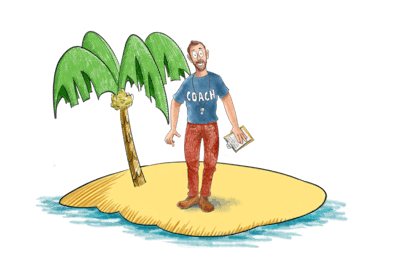We've been fully remote since mid-March and we gave up our office space in North Sydney in April, so it looks as though we're committed to this remote working thing for a while yet.
We've learned a lot in the past few months from trial and error and from researching remote companies such as Basecamp, Automattic and Gitlab who regularly share how they work remotely. And I'd like to give something back to the remote working community so we don't all have to repeat the same mistakes!
A new way of working
Our mindset has shifted to remote work as the default, and we’re now asking why an office? We want to see each other for social connection, strategy sessions and brainstorming etc so how do we facilitate that?
Early on during covid, I put together two surveys to ask the team how they wanted to work, how many days in the office vs at home. Most Yarnoers want to work most of the time at home, with face to face time for social connection rather than "work" per se.
It’s empowering to be proactively choosing to meet face to face. Last Friday we all caught up in a park for our annual Yarnoversary celebration (Yarno's birthday). Usually we celebrate it in June but I parked it this June since it wasn't clear to me how we could do it Covid-safely. Then the party planning committee was formed and took on the task of celebrating in a covid friendly way - a park!
It was the first time we'd all seen each other in the flesh for close to six months and it was energising. I realised that face to face does have a place in remote work, that it doesn't have to be a binary - all working remotely or all in the office. So we're now planning how we can do our October quarterly strategy session in person, like we used to.
Feedback
We continue to practice giving and receiving feedback monthly, just now we do it via Zoom and Miro. I create feedback scenarios in a mindmap format in Miro prior to the session, and we talk through them as a team and then decide if we would give feedback, what channel we'd use to give feedback (Slack, phone, Zoom) and then we role play it. Role playing on Zoom took a little getting used to but the team's adapted to it like pros.
We've discovered that giving negative or constructive feedback via Slack does not work, and have agreed to always give it either on the phone or on Zoom. Though we give positive feedback via multiple channels since it's so beneficial.
We have a regular slot in our weekly Monday morning team WIPs where we shoutout fellow Yarnoers whose efforts in the past week we're appreciative of. Positive feedback feels good, especially in front of your peers! We also have a #thanks Slack channel, where Yarnoers give thanks to each other throughout the week. Could be for helping out on a campaign or with hiring. Anything really.
Employee wellbeing
A question I ask myself is how does employee wellbeing work when you're fully remote? My concern is what happens if someone is in distress and just goes quiet, how will we know and how can we best help them?
Fortunately, regular 1:1s were already part of our cadence, though they've taken on greater emphasis now as a regular connection point and safe space. We've started to use an app called Donut in Slack, that randomly pairs two people together to have a virtual coffee every fortnight. It's a bit of fun and a good way to get Yarnoers in different teams socialising with each other.
We also plan to upskill by training as a team. I'm currently looking at the Accidental Counsellor course, run by Lifeline. It's an introduction to active listening and questioning techniques that you can use to check-in and support someone who may be in distress. The course also covers ways to ask openly about suicide risk and how to respond safely.
Hiring
We're currently interviewing for a Customer Success Manager role, and we've modified our process to be all done on Zoom. We ask for the candidate's permission to record the interview, so the rest of the team can watch at a time of their choosing. This has been unexpectedly awesome, since anyone on the Yarno team can take a look, and add their two cents. It also gives the interviewers a chance to see how they interview, and how they could do it better. I say 'um' and look away from the camera far more than I realised!
Onboarding
How do we onboard new staff remotely? We have a structured onboarding program with all tasks and milestones listed in an Asana project. Our onboarding begins one week out from the new Yarnoer starting, with "preboarding", which is a one week embed campaign delivered via Yarno, to introduce who's who, our values, and a few tools we use, with the goal of getting the new Yarnoer familiar and comfortable prior to their first day.
During preboarding we also plan to share our Yarnoer handbook via the Yarno Learning Library. The handbook is new and something that we produced during Covid - we're super proud of it. It outlines our values, what we expect from each other and how we communicate in a predominately remote environment. We talk to the importance of communicating with context, active listening, asking questions if you're unclear or feel as though you're talking past someone. And also when you'd use Zoom over Slack, or the phone over Zoom.
The first week is planned out with intros and team meetings along with a small project. This learning is again reinforced via Yarno. The new Yarnoer and their team lead set goals for where they want to be at 1 and 3 months, so both are clear what success looks like.
So there's a few things we've been experimenting with over the past few months. I'd love to hear what is and isn't working for you?

